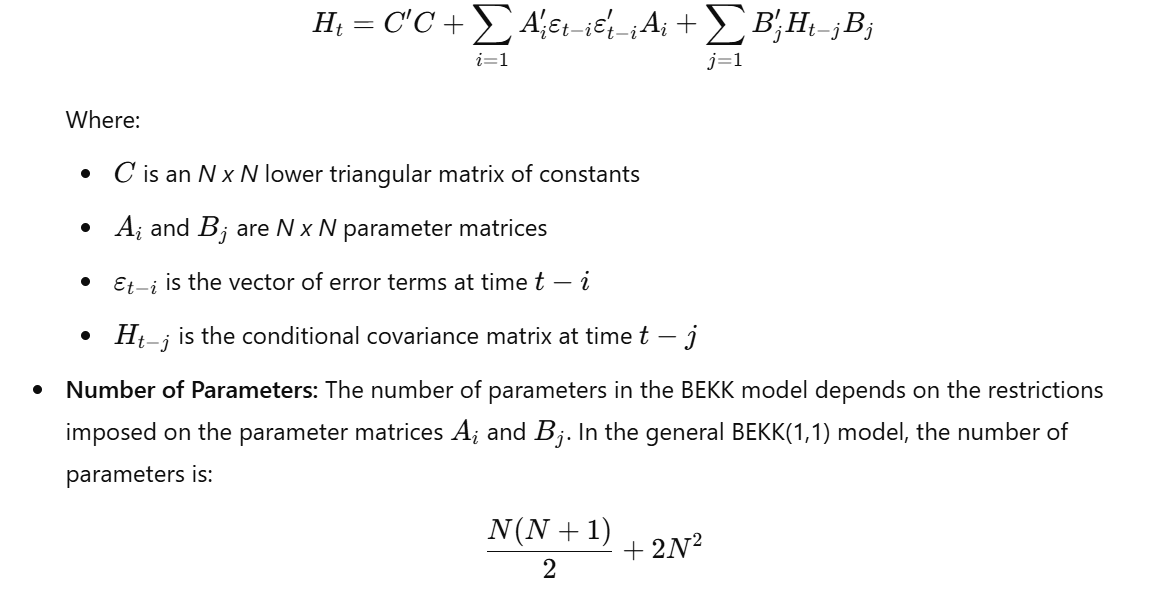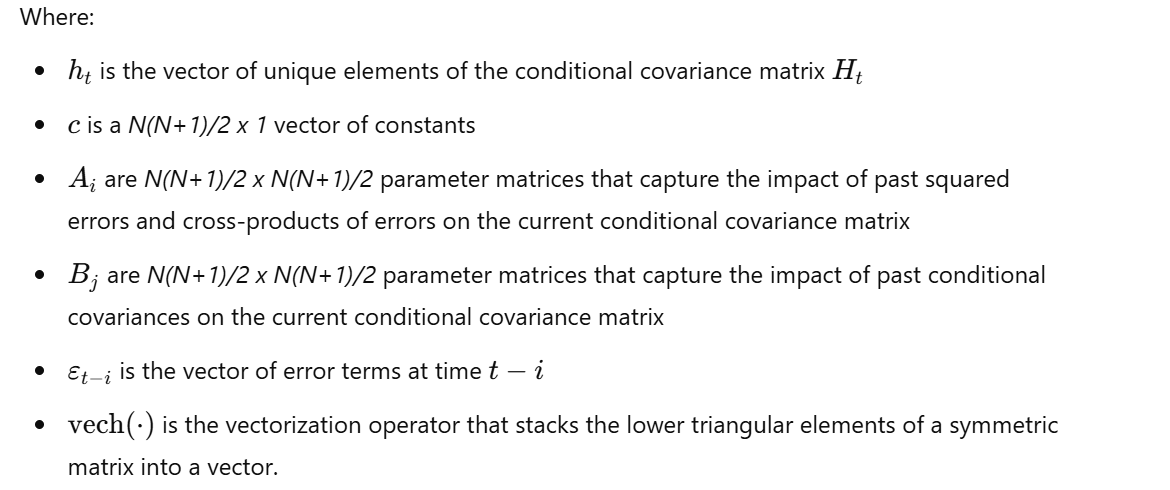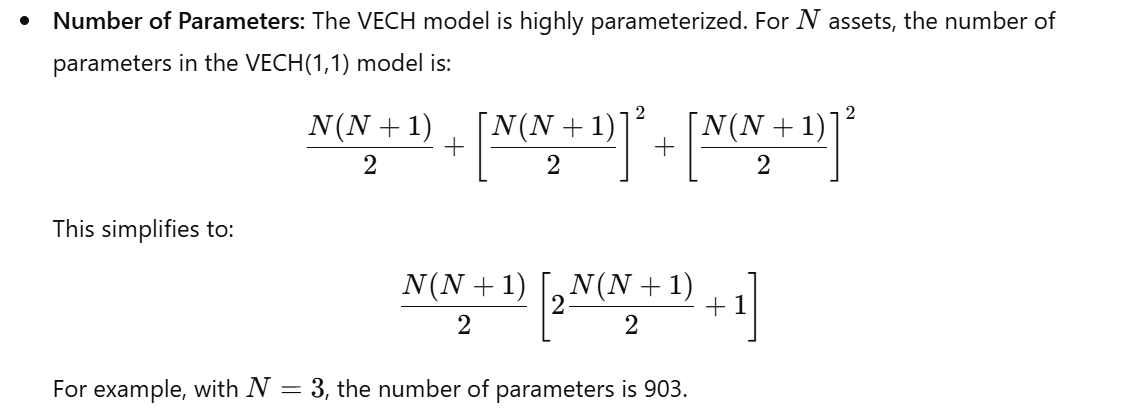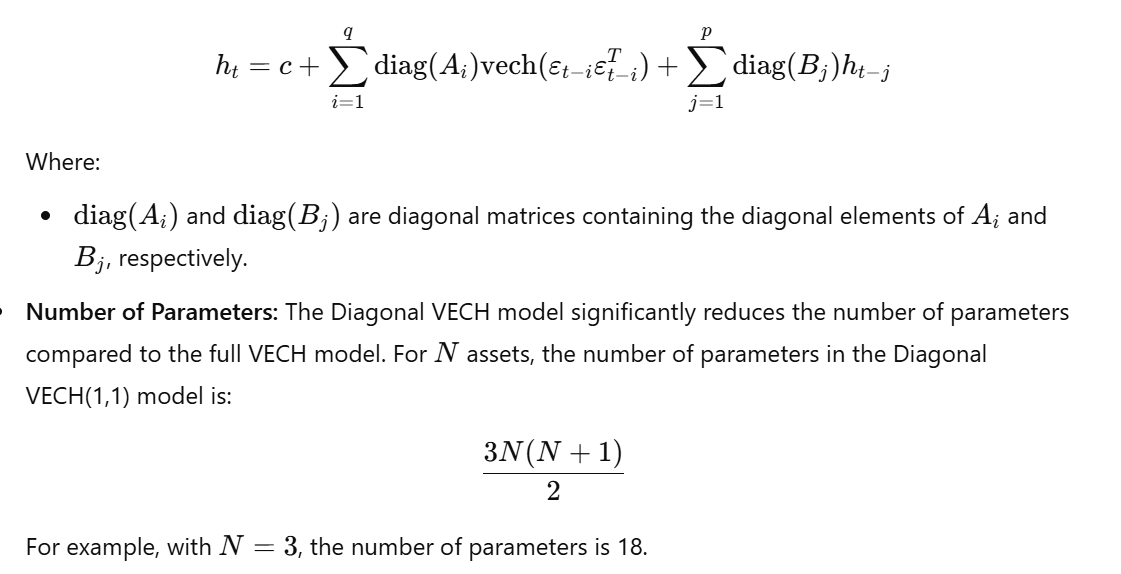VECH, Diagonal VECH, and BEKK Models
Specific MGARCH Specifications
The VECH, Diagonal VECH, and BEKK models are three essential types of MGARCH models, each with its unique approach to modeling the conditional covariance matrix. These models differ primarily in how they parameterize the dynamics of the covariance matrix and handle the challenge of ensuring positive definiteness.
1. VECH Model
-
Description: The VECH model is the most general form of the MGARCH models. It directly models each element of the conditional covariance matrix as a linear function of past squared errors, cross-products of errors, and past values of the conditional covariance matrix itself.
-
Equation:
-
Advantages:
- The most general MGARCH specification.
- Can capture complex dependencies between assets.
-
Disadvantages:
- Curse of dimensionality: The large number of parameters makes estimation challenging, especially with limited data.
- Ensuring positive definiteness of ( H_t ) is not guaranteed and requires imposing complex restrictions on the parameters.
- Difficult to interpret.
2. Diagonal VECH Model
-
Description: The Diagonal VECH model is a restricted version of the VECH model that reduces the number of parameters by assuming that the matrices ( A_i ) and ( B_j ) are diagonal. This means each conditional variance and covariance depends only on its own past values and past squared errors/cross-products of errors.
-
Equation:
The Diagonal VECH(p, q) model is given by:
-
Advantages:
- More parsimonious than the VECH model.
- Easier to estimate.
-
Disadvantages:
- More restrictive than the VECH model.
- May not capture all complex dependencies between assets.
- Ensuring positive definiteness of ( H_t ) is still not guaranteed and requires imposing restrictions on the parameters.
3. BEKK Model
-
Description: The BEKK (Baba, Engle, Kraft, and Kroner) model is a parameterization that guarantees positive definiteness of the conditional covariance matrix. It achieves this by expressing the conditional covariance matrix as a function of the outer product of a matrix, ensuring that the resulting covariance matrix is positive definite.
-
Equation:
The BEKK(p, q) model is given by:

If ( A_i ) and ( B_j ) are diagonal, the number of parameters reduces to:
-
Advantages:
- Guarantees positive definiteness of the conditional covariance matrix.
- More parsimonious than the VECH model.
-
Disadvantages:
- More restrictive than the VECH model.
- May not capture all complex dependencies between assets.
- Still relatively complex to estimate, especially in high-dimensional systems.
- Difficult to interpret individual parameters.
Summary Table
Conclusion
The VECH, Diagonal VECH, and BEKK models are key types of MGARCH models, each offering distinct methods for modeling the conditional covariance matrix. The VECH model is the most general but comes with a high parameterization. The Diagonal VECH model reduces the parameter count by imposing restrictions on the parameter matrices. The BEKK model guarantees positive definiteness but remains more complex to estimate. The choice of model depends on the specific application and the trade-off between flexibility, parsimony, and computational feasibility.







No Comments